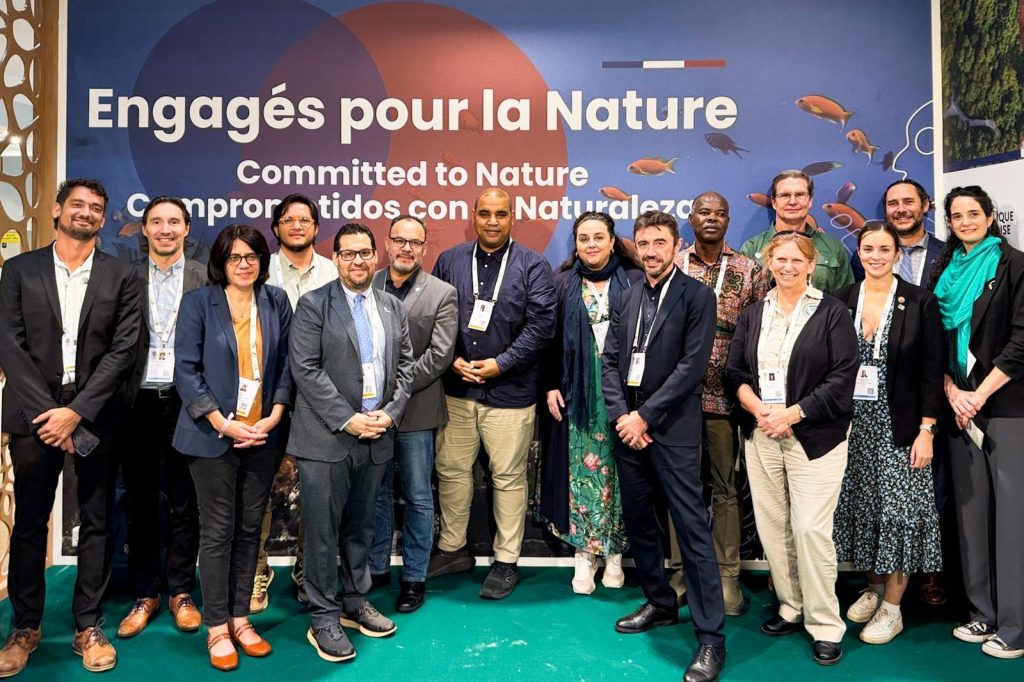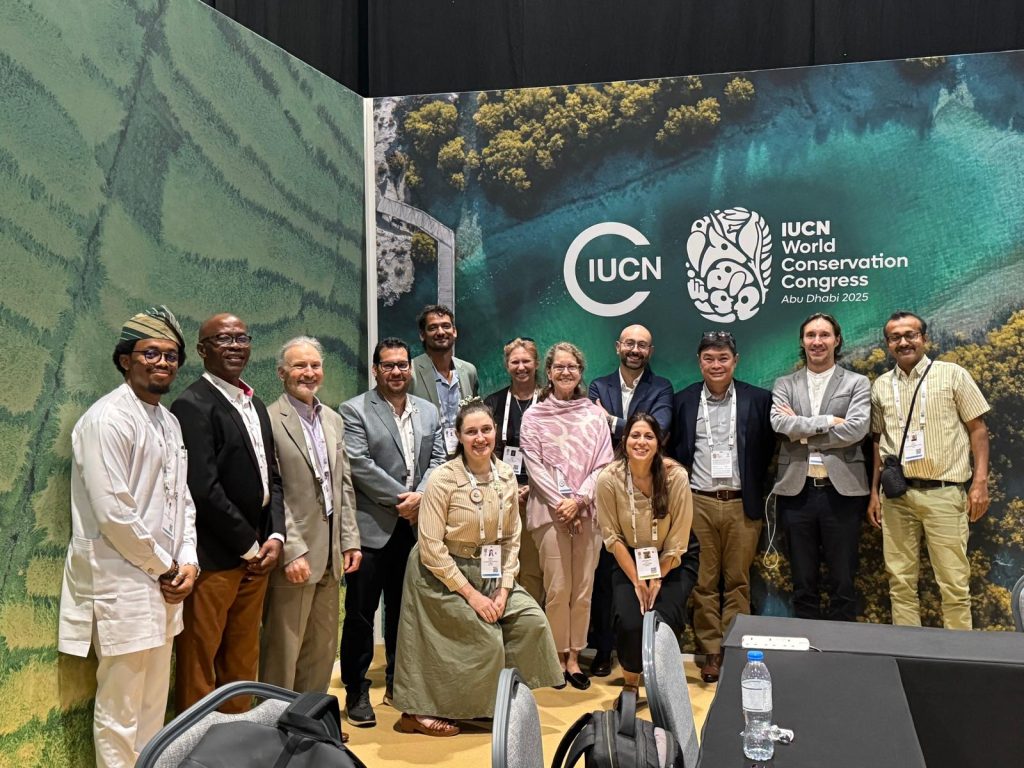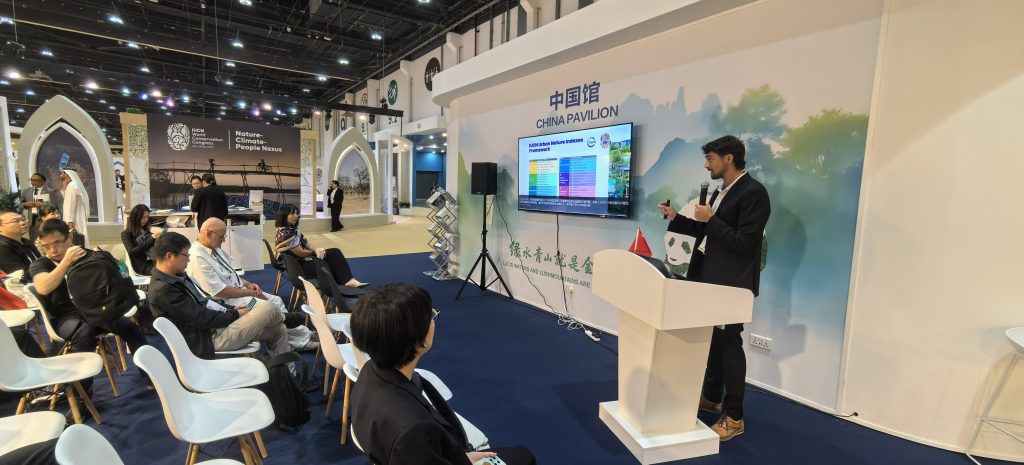The IUCN World Conservation Congress 2025 (Abu Dhabi, 9-15 October 2025) reaffirmed the growing importance of urban nature in global conservation efforts. The IUCN Cities, Culture and Youth Team, in collaboration with the IUCN Urban Alliance and its partners played a central role in shaping the Congress agenda, advancing urban biodiversity, and strengthening the voice of subnational governments.
Sustainable Cities became one of the eight global priorities of the Union, formally incorporated into the IUCN Programme 2026–2029. This milestone reflects the Union’s recognition of the critical role that cities play in achieving global biodiversity and sustainability goals, and ensures that urban nature will remain at the forefront of IUCN’s work in the coming years.

High-Level Dialogue: Transforming Our Urban Environment
A major highlight of the Congress was the high-level dialogue, “Transforming our urban environment: Pathways to sustainability,” held on 11 October 2025. This session convened global leaders to explore how cities can become engines of sustainability by integrating biodiversity into urban planning, deploying nature-based solutions, and fostering inclusive, citizen-driven governance.
The session, moderated by Rogier van den Berg, Global Director for Sustainable Cities, World Resources Institute, convened a group of local experts, including:
- Kirti Vardhan Singh, Minister of State for Environment, Forest & Climate Change and External Affairs, Government of India
- Alderman Edwin Andrews, Deputy Mayor of Cape Town
- Salwa Al Maflahi, Executive Director of Sustainability and Community Outreach, Aldar Properties
- Silvia Montilla Cortés, Chief Growth Officer, UNERGY
The dialogue addressed the challenges and opportunities of rapid urbanization, innovative strategies for integrating nature into cities, and the importance of inclusive governance and youth engagement. The session inspired bold action and collective leadership to ensure that cities become vehicles for regenerating ecosystems, improving well-being, and reconnecting people with the natural world.
Subnational Governments: Expanding the Network

The Congress welcomed new subnational government members to IUCN, including the City of Cape Town (South Africa). Their participation reflects the expanding reach of the Urban Alliance and the increasing recognition of cities and regions as key actors in nature conservation. In addition, a curated weeklong agenda was assembled for members of the Subnational Leader Delegation to highlight achievements and catalyse coordinated action.
The programme included core activities that fostered connections among subnational leaders, provided opportunities to learn from peers and experts and contributed to shaping IUCN’s forthcoming subnational strategy, as mandated by a resolution adopted at Congress. Delegates participated in a suite of relevant Forum and Exhibition sessions that showcased subnational leadership and practical tools for local and global action.
Urban Resolutions: Strategic Commitments
Several motions adopted at the Congress focused on urban and peri-urban nature. These included Motion 100 on Integrating the preservation and recovery of wildlife and plant species into the creation and restoration of buildings, and Motion 103 on Reinforcing and developing urban and peri-urban forests in line with the IUCN Global Standard for Nature-based Solutions. These resolutions signal a strategic shift, embedding urban nature into IUCN’s broader programme and policy frameworks.
Urban Alliance Meeting: Repositioning for Impact

The IUCN Urban Alliance
The IUCN Urban Alliance (UA) convened its first in-person meeting during the Congress, focusing on strategic repositioning. Discussions emphasized the need for the UA to evolve into a connector and advisor, supporting systemic engagement with cities and enhancing visibility across the Union. Updates were shared on resource mobilization efforts, including the GEF-8 Small Grants Program and urban nature-based solutions initiatives in Singapore and South Korea.
Urban Sessions: A Landmark Urban Presence

For the first time, the IUCN World Conservation Congress featured urban themes as a central pillar, marking a significant milestone for the Union and its partners. The Congress showcased a vibrant array of sessions that explored how cities are leading the way in biodiversity conservation, climate resilience, and nature-based solutions. This strong urban presence reflected the growing recognition that cities are not only at the frontlines of environmental challenges but also at the heart of innovative solutions.

Sessions covered a wide spectrum of topics, including urban protected areas, the Berlin Urban Nature Pact, biodiversity measurement through the Urban Nature Indexes, nature-based solutions for dry and “sponge” cities, sustainable construction and circularity, and the launch of new guidelines for urban nature-based solutions. Education, culture, and community engagement were also prominent, with discussions on reconnecting people with nature and empowering subnational governments. This Congress set a new standard for urban engagement, demonstrating that cities are now essential actors in shaping a nature-positive future.

